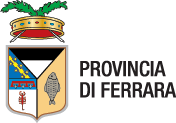Ferrara within the walls: exploring the city with Giorgio Bassani
Born in Bologna into a well-to-do Ferrarese family of Jewish origin, Giorgio Bassani grew up and completed his secondary education in Ferrara, the city in which all his works of fiction are set.
Born in Bologna in 1916, we know that Bassani spent his childhood and youth in Ferrara, which he later made the star of his narrative oeuvre. The link between the author and city of the Este family has certainly been controversial yet indissoluble, so much so that he made the capital of the Po Valley a character of choice rather than a mere backdrop.
This is how the three itineraries found herein were chosen, a bike ride and two walks, ideally mimicking the movement of the writer, who tends to go from the inside outwards, opposing the centripetal force silently imposed by the walls as he does. Each itinerary starts from the centre of Ferrara and heads in a different direction towards the outside of the city. However, each one also finds a characteristic destination within the city walls that's uniquely tied to Bassani and his life: the MEIS - Museum of Judaism and the Holocaust (formerly a prison in Via Piangipane, where the writer was detained in 1943), the Prospettiva in Corso Giovecca, and the tomb of Giorgio Bassani in the Jewish cemetery in Via delle Vigne.
These itineraries are designed both for those who already love Bassani's work, intended to give substance to the black and white of the pages, but also for those who wish to learn about his work quite literally 'through' Ferrara. In both cases, the itineraries concretize the inevitable and constitutive recursion that binds Bassani to the city where he was born and raised.
For further information on the itineraries visit this website: MuseoFerrara. La città di Bassani.
------------------------------------------------------------------
- ITINERARIES STARTING POINT: CORSO MARTIRI DELLA LIBERTA'
- ITINERARIES STARTING POINT: CORSO MARTIRI DELLA LIBERTA'
The centre of Ferrara is home to what may just be one of the most significant places, not only for the city, but also for Giorgio Bassani and his work: the Estense Castle, and more precisely, the moat wall that runs along Corso Martiri della Libertà (previously named Corso Roma, and later renamed after the fascist massacre of 15 November 1943) around which A Night in '43 (the last of the Five Stories from Ferrara) takes place.
| Itinerary 1-THE SHADOW OF THE FINZI-CONTINIS (4 km-bike) |
|---|
| Itinerary 2-BEHIND THE DOOR OF THE GHETTO (2 km-on foot) |
| Itinerario 3-BEYOND THE WINDSHIELD (2 km-on foot) |
Related documents
Itinerary locations
last modified
Nov 22, 2024 04:58








